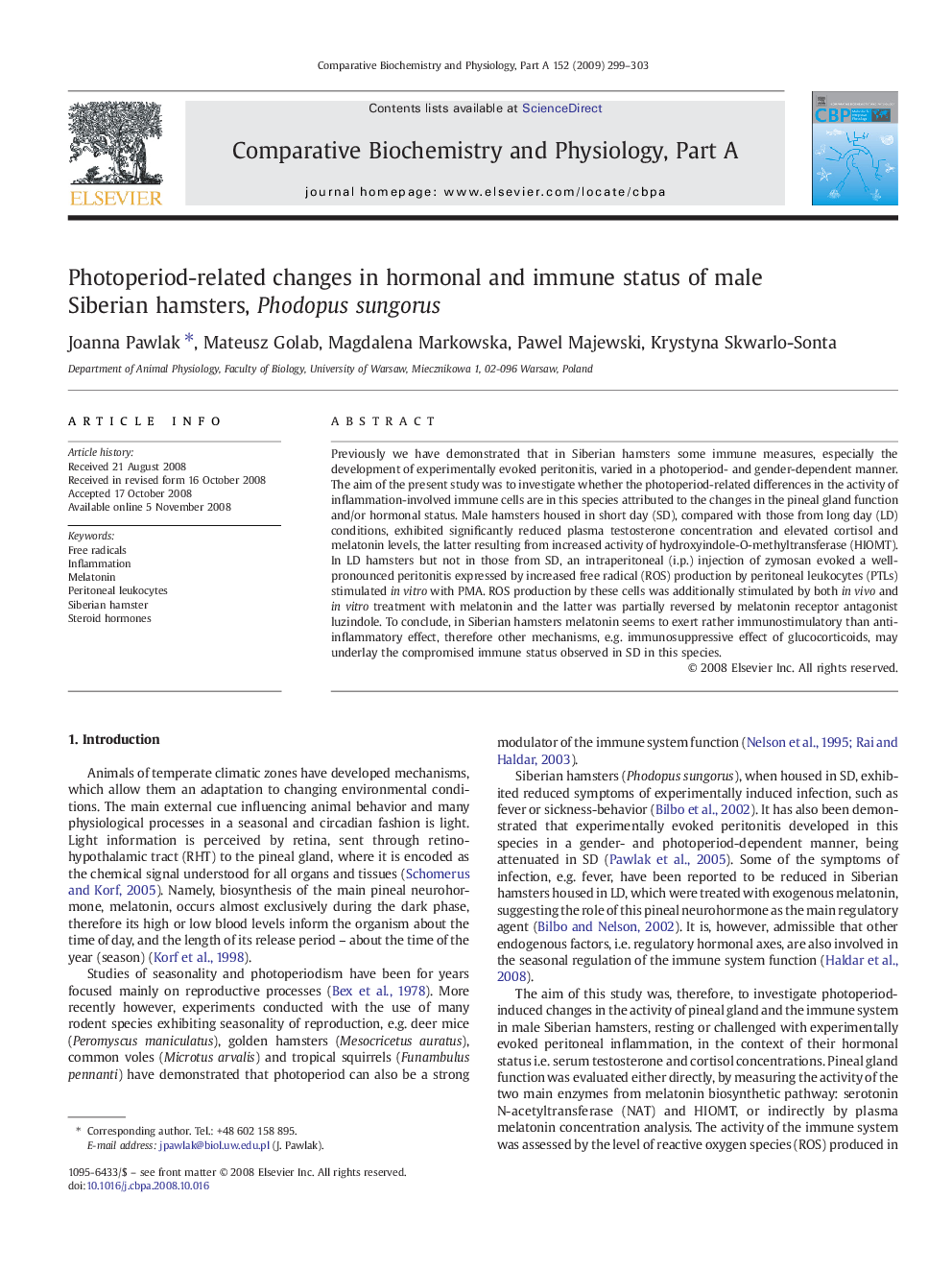| Article ID | Journal | Published Year | Pages | File Type |
|---|---|---|---|---|
| 1973464 | Comparative Biochemistry and Physiology Part A: Molecular & Integrative Physiology | 2009 | 5 Pages |
Previously we have demonstrated that in Siberian hamsters some immune measures, especially the development of experimentally evoked peritonitis, varied in a photoperiod- and gender-dependent manner. The aim of the present study was to investigate whether the photoperiod-related differences in the activity of inflammation-involved immune cells are in this species attributed to the changes in the pineal gland function and/or hormonal status. Male hamsters housed in short day (SD), compared with those from long day (LD) conditions, exhibited significantly reduced plasma testosterone concentration and elevated cortisol and melatonin levels, the latter resulting from increased activity of hydroxyindole-O-methyltransferase (HIOMT). In LD hamsters but not in those from SD, an intraperitoneal (i.p.) injection of zymosan evoked a well-pronounced peritonitis expressed by increased free radical (ROS) production by peritoneal leukocytes (PTLs) stimulated in vitro with PMA. ROS production by these cells was additionally stimulated by both in vivo and in vitro treatment with melatonin and the latter was partially reversed by melatonin receptor antagonist luzindole. To conclude, in Siberian hamsters melatonin seems to exert rather immunostimulatory than anti-inflammatory effect, therefore other mechanisms, e.g. immunosuppressive effect of glucocorticoids, may underlay the compromised immune status observed in SD in this species.
